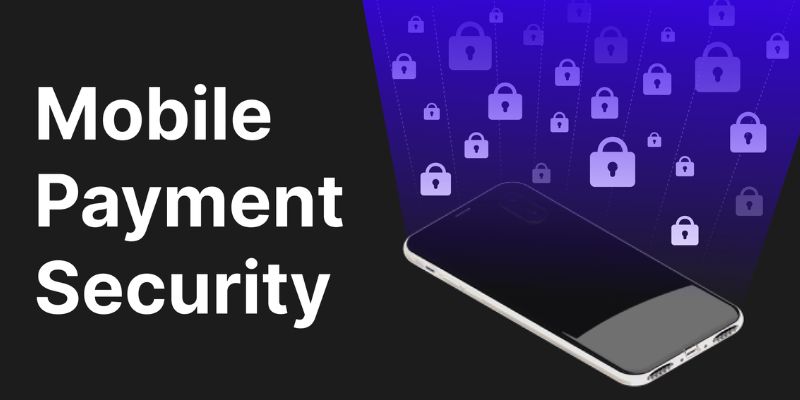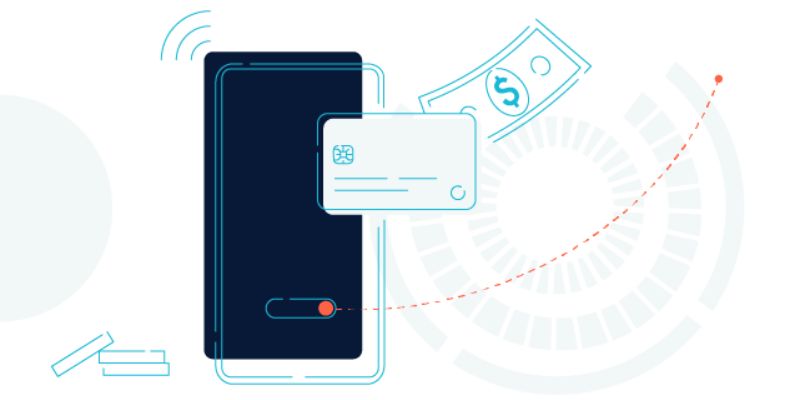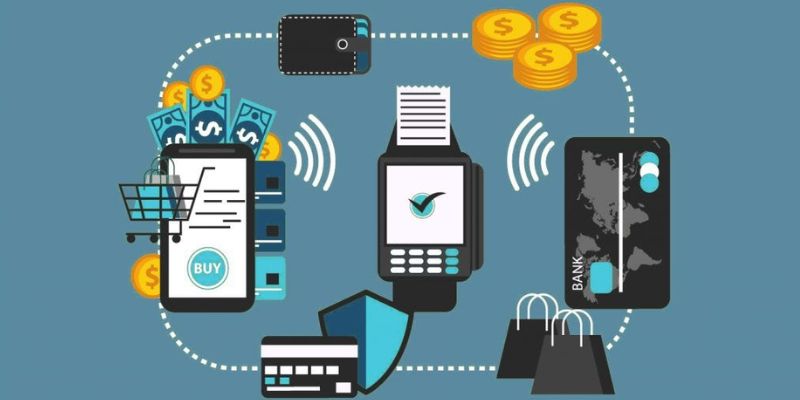In the tap-and-go era, Security of mobile payment platforms is on everyone’s mind. You link your cards, tap your phone, and boom – groceries paid for. But what’s happening behind the screen? Your money zips through the air, but is it landing safely? This article cracks open the truth about how secure your mobile payments really are. From the lock-tight layers of digital wallet safety features to the frontline defenses against sneaky scammers, I’m here to guide you through the labyrinth of tech protecting your cash. Ready to dive in? Let’s explore how your mobile payment platform stands guard over your hard-earned money.
Understanding the Landscape of Mobile Payment Security
The Fundamentals of Mobile Payment Safety Measures
When you tap to pay with your phone, you’re using some cool tech to keep your money safe. That tech is called mobile payment safety measures. Think of it like a guard that keeps watch over your wallet when you’re not looking.
But how does it work? Let’s talk security basics.
First up, there’s something called tokenization in mobile payments. What’s that? Imagine your card details are a secret code. Each time you pay, a new code is made. So even if bad guys get it, they can’t use it again.
What about when you buy stuff inside apps? That’s securing in-app purchases. The apps have their own guards too. They work hard to keep sneaky people out, like a lock on your phone.
Now let’s chat about NFC payment safety. NFC stands for near field communication. It lets your phone talk to the card machine without touching. It’s quick and easy but also needs strong protection so no one else can snoop.
Lastly, with strong customer authentication, before you pay, you prove it’s really you. You might use a fingerprint or a secret number that only you know. This stops anyone who’s not you from buying things with your phone.
Navigating Digital Wallet and Contactless Payment Protection
Let’s dive into keeping your digital wallet and tap-to-pay safe.
Digital wallet security means keeping your money locked tight in your phone wallet. It’s like having a tiny bank in your pocket. No one gets in unless they have the key, which is usually your fingerprint or face!
This is where biometric verification in payments comes in. Instead of typing a password, you use a part of you, like your thumbprint. Super cool, right? It means only you can unlock and pay with your phone.
Then we have encryption standards for mobile transactions. This is a fancy way to say that your card talk turns into a secret code as it travels through the air. It’s like speaking a language only the card machine can understand.
But how do we know it’s all working right? Well, there’s PCI DSS compliance. This is like a rulebook that says how to keep card info safe. All the phone and app folks have to follow these rules so you can tap, pay, and be on your way without worry.
So, when it’s about contactless payment protection, remember these things: your details are turned into one-time codes, your actual card numbers stay secret, and your phone uses parts of you to make sure it’s really you. Plus, there’s a whole bunch of rules everyone follows to keep it all safe.
In short, next time you tap your phone to pay, know there’s a lot going on behind the screen to protect your hard-earned cash. These security ninjas work day and night, so you can buy your favorite things without a single fret.

Fortifying Transactions: Authentication and Compliance
Elevating Security with Two-Factor and Biometric Verification
How do we add an extra layer of safety to mobile payments? We use two-factor authentication and biometric checks. Two-factor authentication asks for two types of info before letting you in. It’s like a one-two punch to hackers. First, it’s something you know, like a password. Then, it’s something you have, like a code sent to your phone. Together, they guard your money tight.
Biometric verification uses your body to confirm it’s really you. Think of it as a bouncer that knows you by face or fingerprint. Now your digital wallet gets personal. It uses your unique traits to lock down access. No two faces or fingerprints are the same, right? That’s why it’s tough for bad folks to fake it.
Mobile payment safety means thinking ahead. Combining something you know with something you have or are? That’s smarter than just a password. It’s like a secret handshake for your phone. This makes sure only you can touch your cash.
The Role of PCI DSS Compliance and Encryption Standards
What’s key to keeping mobile payments safe? It’s following rules set by payment card pros. These rules help stop fraud and leaks. The PCI DSS stands for big words that mean “keeping card info safe.” It’s a set of rules that all businesses must follow if they handle your card info.
Encryption is a secret code for your data. It scrambles your payment details into a mess that only the right receiver can solve. It’s like whispering a secret in a noisy room. No one else can get it but the person you’re whispering to. Every time you make a mobile payment, encryption keeps your info a secret.
Want your money to stay safe? Make sure you use apps that follow PCI DSS and encrypt data. They should tell you about their safety steps. Good apps don’t hide how they keep your info safe. They’re proud of it and they let you know.
Mobile payment safety is a big deal. It’s about making sure no one gets to your money. Bad folks are smart, but we can be smarter. Using two checks — something you know and have or are — is key. Make sure your payment app follows the rules and uses codes to keep your data safe. And always check up on how they work to protect you. Your money matters, and so does your trust.

Preventative Tactics Against Mobile Payment Fraud
The Significance of Tokenization and Risk Assessment
When you pay with your phone, threats linger. How do we keep money safe? We start with tokenization. It turns your card number into a unique code for each sale. This way, if hackers strike, they find worthless tokens, not real card details.
Think of tokenization as a secret code for your payment info. Each time you buy something with your phone, your details get a new secret code. It’s like giving someone a fake key. Even if they copy it, it won’t open your door.
Next up is risk assessment for payment apps. This is like a health check for your app. It searches for weak spots and fixes them. Just like doctors prevent illness, risk assessments stop fraud before it happens.
Strategies for Combatting Phishing and Implementing Secure Payment Gateways
Phishing is a trick to steal your info. Fake emails or texts ask for your details. They look real but aren’t. Always check who’s asking. If unsure, don’t click or share. Remember, your bank will never ask for passwords or PINs by text or email.
For secure payment gateways, we want strong guards for our money’s digital path. Two layers work best. The gateway must check who you are in two ways before approving the payment. Maybe it asks for a fingerprint and a one-time code sent to your phone.
To sum up, mobile payment safety is like a fortress. You need good walls (tokenization), alert guards (risk assessment), and secure locks (phishing defense and payment gateways). With these in place, your money stays safe in the digital world.
Building Trust Through Advanced Security Technologies
Integrating Machine Learning for Proactive Fraud Detection
Machine learning helps stop fraud before it happens. This tech learns from past fraud to catch new scams. Think of it like a guard dog that gets smarter every day.
How does machine learning improve mobile payment safety measures? It’s all about patterns and detection. By constantly learning what fraud looks like, it can bark at strange activities. This is key in digital wallet security.
When you use your phone to pay, your digital wallet must be safe. Machine learning steps in by studying your payment habits. It looks for odd behavior. If it finds something, it can block the transaction. It can even alert you or your bank.
Machine learning also plays a role in contactless payment protection. As you tap to pay, your phone talks to the terminal using NFC payment safety methods. Machine learning watches this chat. It makes sure nothing fishy is going on.

Adhering to Regulatory Standards and Maintaining Secure Ecosystems
To keep payments safe, we follow strict rules. These rules, like PCI DSS compliance, make sure your info stays secret. It’s like a fort that guards your data.
What are PCI DSS compliance and encryption standards for mobile transactions? PCI DSS is like a rulebook for handling card info. It covers things like how to build a secure network and protect cardholder data. Encryption jumbles up your data so only the right folks can read it.
Mobile payment fraud prevention is crucial. To prevent mobile pay data breaches, we make systems that follow every rule. These systems check each other for weaknesses and keep the bad guys out.
In mobile banking cybersecurity, we use something called two-factor authentication. It’s like having two keys for one lock. It could be something you know, like a PIN, and something you have, like your phone. Two keys are better than one.
Biometric verification in payments is getting big, too. This is using parts of you, like your fingerprint, to prove it’s really you. It’s like having a secret handshake with your phone.
To back all this up, we use anti-fraud technology for smartphones. Our tech scans for threats and fights them off. It’s like having a bodyguard for your phone.
Keeping our mobile payment ecosystems secure is a big job. We work behind the scenes to check everything is safe. We get payment security certifications to prove we’re good at this.
When you use safe payment gateways for mobile, think of them as bridges with guards on both ends. They make sure only the right people get across with their money.
For secure mobile payment methods, trust matters. We bring you the latest security so you can shop without worry. We’re putting our best tech forward to keep your money safe.
In this post, we covered how to keep your mobile payments safe. We started by explaining the basic steps to protect your money when you pay with your phone. We showed you that keeping things like your digital wallet secure is a must. We then talked about how adding extra checks like fingerprint scans helps a lot. It’s also key to follow the rules that keep your card info safe on the web.
Next, we looked at how to stop fraud before it happens. We saw how turning card numbers into one-time use codes can lower risk. We also went over ways to spot and dodge tricks from fraudsters.
Lastly, we went deep into how new tech can spot crime before it strikes and why following the law keeps your payments secure. All in all, when you use these tips, you make it tough for thieves to take your cash. So stay sharp, use these tricks, and you can tap, swipe, or click with more peace of mind.
Q&A :
Certainly, here’s a well-optimized FAQ section for the keyword “Security of mobile payment platforms”:
How do mobile payment platforms keep my information secure?
Mobile payment platforms implement a variety of security measures to safeguard your personal and financial information. These typically include end-to-end encryption, tokenization of payment details, and secure element technology to store your data more securely on your device. Regular software updates and compliance with Payment Card Industry Data Security Standards (PCI DSS) also ensure up-to-date protection. Additionally, many services require authentication methods such as biometrics or PINs for transactions, reducing the risk of unauthorized access.
What are the common security risks associated with mobile payments?
While mobile payment platforms go to great lengths to secure transactions, users should be aware of potential risks. These can include lost or stolen devices, data breaches at the payment service provider, malware or phishing attacks targeting mobile devices, and unsecured Wi-Fi networks that can be exploited by hackers. To mitigate such risks, it’s crucial to keep your device secure, use strong passwords, and only conduct transactions on trusted networks.
Are contactless mobile payments safer than traditional payment methods?
Contactless mobile payments are generally considered to be safer than magnetic stripe payments due to the advanced security protocols they employ. Each transaction uses a one-time code, hindering potential fraud, and no sensitive card information is shared with the merchant. Although no method is infallible, the unique identifiers used in mobile transactions provide an additional layer of security.
What steps can I take to enhance the security of my mobile payments?
To ensure the highest level of security for your mobile payments, always use strong, unique passwords for your payment apps and enable two-factor authentication if available. Regularly update your apps and device’s operating system to benefit from the latest security patches. Only download payment apps from trusted sources like official app stores and avoid using public Wi-Fi for financial transactions. Lastly, monitor your transaction history frequently to spot any unauthorized activity promptly.
Can I disable mobile payments if my phone is lost or stolen?
Yes, if your phone is lost or stolen, you can and should immediately disable mobile payment functions. Most mobile payment providers offer online portals or customer service lines through which you can report your device as missing and suspend or remove payment capabilities. Additionally, using features like remote wipe can help safeguard your data in such situations, and it’s important to contact your bank to inform them of the potential risk.
These questions offer valuable insights into the security of mobile payment platforms, addressing user concerns while implementing SEO best practices for better online visibility.

